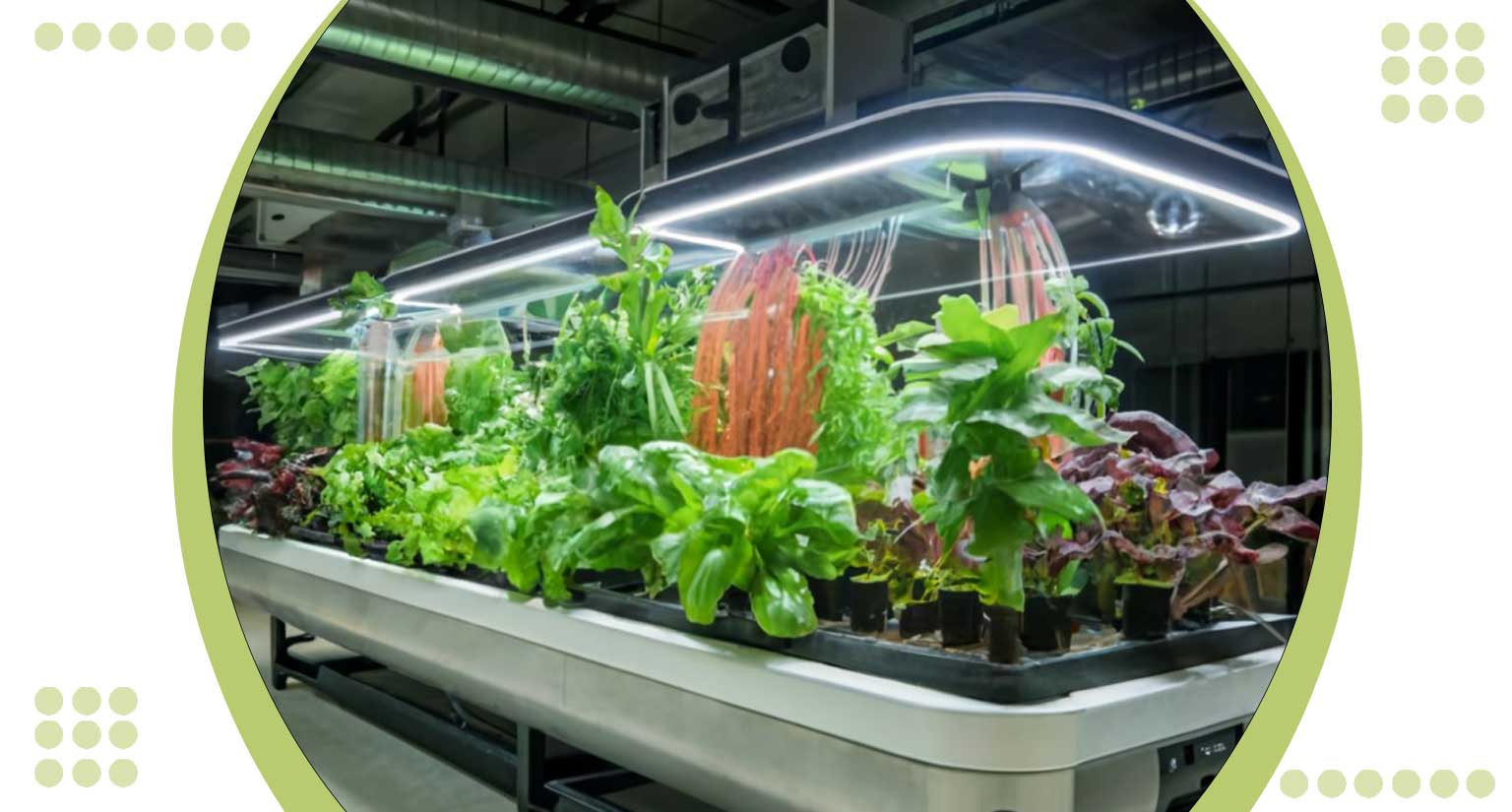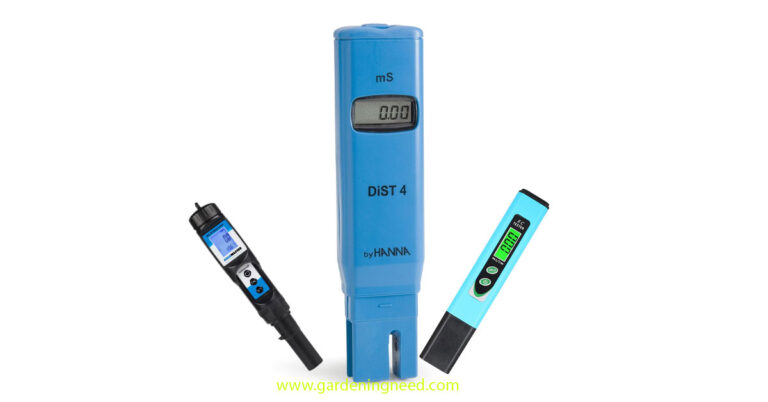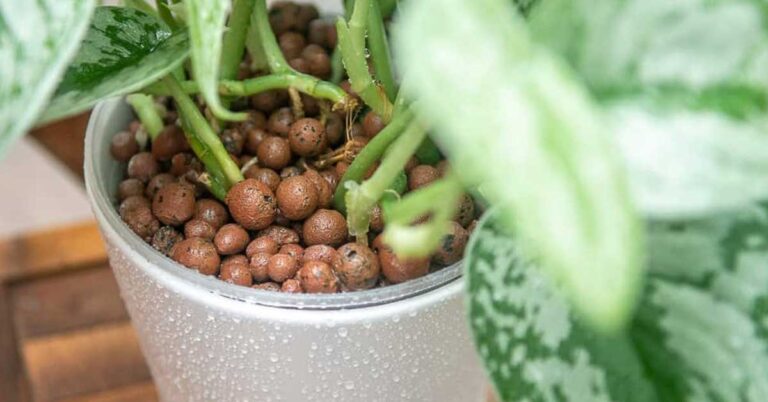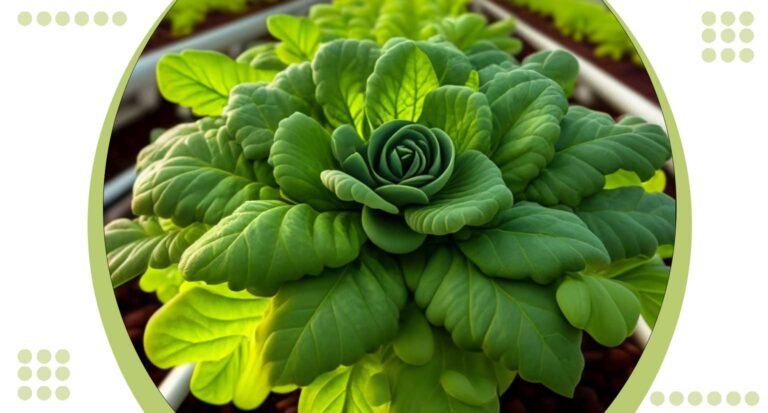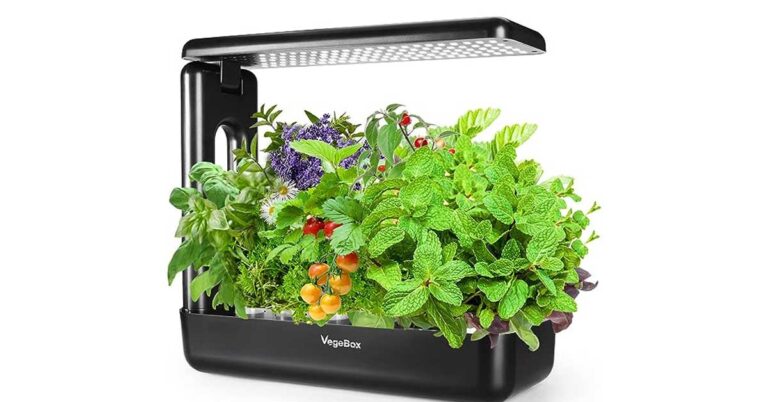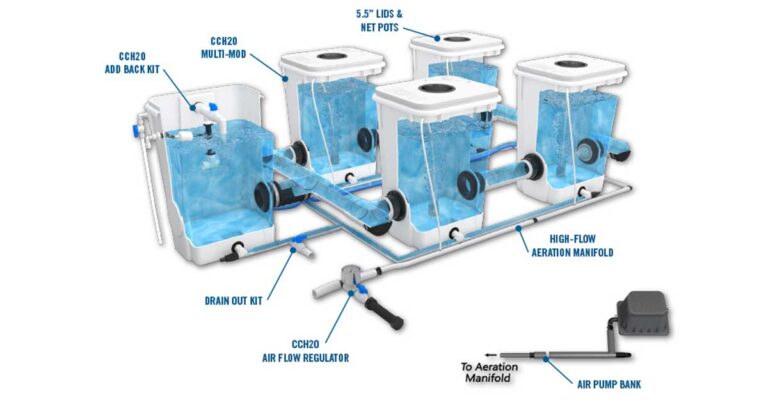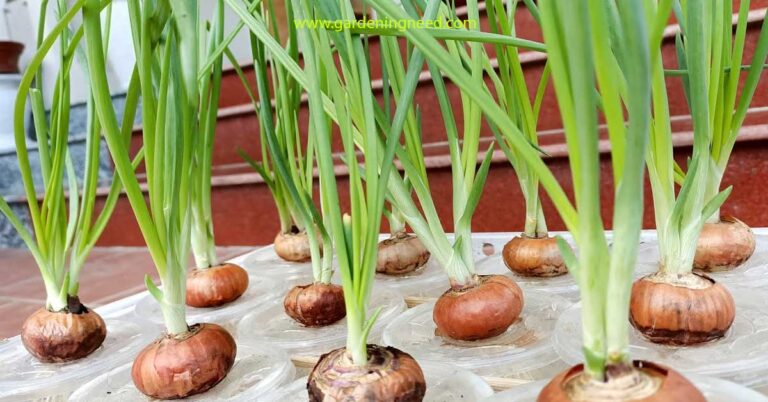Best Hydroponics System: Top 10 Picks for Max Growth
The world of hydroponics, where innovation meets cultivation. The Best Hydroponics System revolutionizes traditional gardening methods, offering unparalleled efficiency and results. With cutting edge technology and scientific precision, this system transforms the way plants thrive.
The epitome of sustainable agriculture and the potential of your green spaces with the Best Hydroponics System. Experience higher yields, faster growth and environmental stewardship like never before. Increase your gardening experience and embrace the future of cultivation.
Choosing the best hydroponics system is crucial for maximizing crop yields and efficiency in modern agriculture. These systems offer a revolutionary approach to cultivating plants without soil, using nutrient rich water solutions to nourish roots directly.
Whether you’re a seasoned farmer or an urban gardener, selecting the right hydroponics system can significantly impact the quality and quantity of your harvests. The top 10 picks in hydroponic systems, each designed to enhance growth rates, optimize space utilization and ensure sustainable farming practices.
What Is The Most Efficient Method For The Best Hydroponic System?
When seeking the most efficient hydroponic system method, the Deep Water Culture (DWC) stands out as the ultimate choice, offering a seamless blend of simplicity, effectiveness and exceptional plant growth.
Deep Water Culture (DWC)
In the DWC system, plants are suspended in net pots above a nutrient rich water reservoir. The roots hang freely in the oxygenated solution, promoting direct nutrient absorption and accelerated growth.
This method eliminates the need for soil entirely, streamlining the cultivation process and minimizing the risk of pests and diseases.
Key Features and Benefits
Optimized Nutrient Uptake
The DWC system excels in providing a direct and continuous supply of nutrients to plant roots. This allows for optimal nutrient uptake, resulting in faster growth rates, robust foliage development and ultimately, higher yields.
Simplicity and User Friendly Design
One of the defining features of the DWC system is its simplicity. It is easy to set up and maintain, making it an ideal choice for both beginners and experienced growers. The uncomplicated design allows for hassle free monitoring and adjustment of nutrient levels.
Improved Oxygenation
The suspended roots in the oxygen rich nutrient solution enhance oxygen absorption, fostering a healthy root system. This aeration not only accelerates growth but also reduces the likelihood of root diseases, ensuring the longevity and vitality of the plants.
Scalability and Adaptability
The DWC system is highly scalable, accommodating a diverse range of plant types and sizes. Whether cultivating leafy greens, herbs or flowering crops, the system provides the flexibility to meet the specific requirements of different plants, making it a versatile choice for growers.
Water and Resource Efficiency
By recirculating the nutrient solution, the DWC system promotes water and resource efficiency. This sustainable approach not only conserves water but also minimizes nutrient waste, aligning with environmentally conscious gardening practices.
Consistent and Predictable Results
With its stable and controlled environment, the DWC system ensures consistent and predictable results. Growers can confidently anticipate optimal conditions for plant growth, leading to reliable harvests and a positive overall gardening experience.
For those seeking the epitome of efficiency in hydroponic gardening, the Deep Water Culture (DWC) system emerges as the best hydroponic system method. With its user-friendly design, optimized nutrient delivery and versatility, the DWC system empowers growers to cultivate thriving gardens with ease.
Embrace efficiency and elevate your growing experience with the DWC system, a true champion in the world of hydroponics.
Testing The Best Hydroponic Systems
Ensuring Quality and Performance
At our research facility, we embarked on a rigorous journey to identify the top performing hydroponic systems in the market. Our comprehensive testing methodology aimed to evaluate key factors such as efficiency, reliability, ease of use and overall plant health.
Selection Process
We began by meticulously curating a diverse selection of hydroponic systems, encompassing various designs, sizes and functionalities. Our goal was to encompass a wide range of options to cater to different gardening needs and preferences.
Setup and Installation
Each hydroponic system underwent meticulous setup and installation according to manufacturer instructions. We paid close attention to ease of assembly, clarity of instructions and the time required to get the system up and running.
Monitoring and Data Collection
Throughout the testing period, we monitored crucial parameters including nutrient levels, pH balance, water circulation and plant growth rates. Advanced sensors and monitoring tools enabled us to gather real time data and track the performance of each system.
Performance Evaluation
We evaluated the performance of the hydroponic systems based on several criteria, including.
Growth Rate
We measured the growth rate of plants grown in each system, assessing factors such as leaf development, stem strength and overall vigor.
Nutrient Absorption
We analyzed the efficiency of nutrient uptake by plants, ensuring optimal nutrient delivery and absorption for healthy growth.
Disease Resistance
We monitored the prevalence of pests and diseases, evaluating the system’s ability to maintain a clean and disease free environment.
Yield and Harvest Quality
We assessed the quantity and quality of harvests produced by each system, considering factors such as crop yield, taste and nutritional value.
User Experience and Feedback
In addition to objective performance metrics, we also considered user feedback and experience. We solicited input from gardeners of varying skill levels to gauge ease of use, maintenance requirements and overall satisfaction with each system.
Analysis and Comparison
After compiling data from extensive testing and evaluation, we conducted a thorough analysis to rank the hydroponic systems based on their performance, reliability and overall value.
Final Recommendations
Our testing culminated in the identification of the best hydroponic systems that excelled in performance, reliability and user satisfaction. We present our findings and recommendations to empower consumers in making informed decisions about their hydroponic gardening journey.
The comprehensive testing methodology ensures that only the finest hydroponic systems earn our endorsement. Through meticulous evaluation and analysis, we strive to provide gardeners with reliable tools and insights to cultivate thriving gardens with confidence and success.
Top 10 Picks for Max Growth
1. Nutrient Film Technique (NFT) Systems
Nutrient Film Technique (NFT) systems are renowned for their efficiency in delivering a continuous flow of nutrient rich water directly to plant roots. These systems utilize a shallow, recirculating stream of water that keeps roots oxygenated while promoting rapid nutrient absorption. Ideal for growing leafy greens and herbs, NFT systems maximize space utilization and minimize water consumption, making them a top choice for urban agriculture.
2. Deep Water Culture (DWC) Systems
Deep Water Culture (DWC) systems immerse plant roots directly into a nutrient solution, providing constant access to oxygen and nutrients. These systems are prized for their simplicity and effectiveness, particularly for cultivating robust plants like tomatoes and cucumbers. DWC systems excel in promoting fast growth rates and are easy to set up and maintain, making them suitable for both beginners and experienced growers alike.
3. Aeroponic Systems
Aeroponic systems suspend plant roots in the air and mist them with a nutrient solution at regular intervals. This method promotes exceptionally fast growth rates and high yields by ensuring optimal oxygenation and nutrient absorption. Aeroponic systems are prized for their efficiency in water and nutrient use, making them ideal for growing delicate crops such as strawberries and peppers in controlled environments.
4. Vertical Tower Systems
Vertical tower systems utilize vertical space efficiently by stacking multiple growing trays or towers. These systems are versatile and scalable, making them perfect for maximizing yield in limited spaces. Vertical towers often incorporate automated nutrient delivery and LED grow lights, enabling year round cultivation of a variety of crops from lettuce to strawberries, making them a popular choice among commercial growers and urban farmers.
5. Ebb and Flow (Flood and Drain) Systems
Ebb and Flow systems work by periodically flooding the grow tray with nutrient solution, which then drains back into a reservoir. This cycle ensures that plants receive ample nutrients and oxygen, promoting vigorous growth and robust root development. Ebb and Flow systems are suitable for a wide range of crops, including herbs, flowers and even small fruiting plants like peppers, providing flexibility and reliable performance.
6. Drip Irrigation Systems
Drip irrigation systems deliver a precise amount of nutrient solution directly to each plant through a network of tubing and emitters. These systems are highly efficient in water and nutrient use, ensuring minimal waste while maintaining consistent moisture levels in the root zone. Drip systems are favored for their adaptability and ease of automation, making them suitable for both small scale hobbyists and large scale commercial operations growing crops like strawberries, tomatoes and cannabis.
7. Aquaponics Systems
Aquaponics systems integrate hydroponics with aquaculture, utilizing fish waste to provide nutrients for plants grown in water. This symbiotic relationship creates a closed loop ecosystem where plants purify the water for fish, while fish waste fertilizes plants. Aquaponics systems are prized for their sustainability and nutrient rich produce, making them ideal for cultivating a wide range of vegetables and herbs while producing fish simultaneously.
8. Hybrid Systems
Hybrid systems combine different hydroponic techniques to leverage their respective advantages. For example, a hybrid system might integrate NFT for leafy greens with DWC for larger plants, optimizing space and productivity. These systems are customizable to meet specific crop needs and growing conditions, offering flexibility and enhanced yield potential in diverse agricultural settings.
9. Containerized Systems
Containerized hydroponic systems are designed for portability and versatility, allowing growers to cultivate plants in various types of containers such as buckets, barrels or specially designed pots. These systems are popular among urban gardeners and hobbyists seeking to maximize space and convenience while achieving robust crop yields. Containerized systems can be easily moved indoors or outdoors based on seasonal changes or space availability, providing flexibility for year round gardening.
10. DIY and Customizable Kits
DIY and customizable hydroponic kits empower enthusiasts to build their own systems tailored to their specific needs and preferences. These kits often include everything from nutrient solutions to grow lights and can be assembled using readily available materials. DIY systems allow for experimentation and creativity in hydroponic gardening, making them an excellent choice for learning and personalizing the growing experience.
Advantages Of Owning A Hydroponic System
Hydroponic gardening offers a myriad of advantages, revolutionizing traditional growing methods and empowering enthusiasts with unparalleled opportunities for cultivation and innovation.
Maximizing Space Utilization
Hydroponic systems are designed to maximize space efficiency, making them ideal for urban dwellers and those with limited gardening areas. With vertical growing options and compact setups, hydroponic systems allow growers to cultivate a diverse range of plants in minimal space.
Water Conservation
Unlike traditional soil based gardening, hydroponic systems utilize water more efficiently by recirculating nutrient solutions. This sustainable approach to water management reduces overall water consumption and minimizes runoff, making hydroponics an eco-friendly choice for conscientious gardeners.
Enhanced Plant Growth and Yields
Hydroponic systems provide plants with direct access to essential nutrients, oxygen and water, resulting in accelerated growth rates and increased yields. By optimizing growing conditions and eliminating soil related challenges, hydroponics fosters healthier, more vigorous plants that produce bountiful harvests.
Year Round Cultivation
With hydroponic gardening, seasonal limitations become a thing of the past. By controlling environmental factors such as temperature, humidity and lighting, growers can create an optimal year round growing environment, enabling continuous harvests and crop rotation regardless of external conditions.
Reduction in Pests and Diseases
Hydroponic systems minimize the risk of pests and diseases commonly associated with soil based gardening. By eliminating soil as a growing medium, hydroponics creates a cleaner and more hygienic environment, reducing the need for pesticides and chemical treatments.
Customization and Control
Hydroponic systems offer unparalleled control over growing conditions, allowing growers to fine tune parameters such as nutrient levels, pH balance and light intensity. This level of customization enables experimentation and optimization, empowering growers to tailor their setups to the specific needs of different plant species.
Educational and Therapeutic Benefits
Hydroponic gardening provides a hands-on learning experience that engages individuals of all ages and backgrounds. It offers opportunities for experimentation, problem solving and creative expression, making it an excellent educational tool for schools, community programs and therapeutic settings.
Sustainable Agriculture Practices
As concerns about food security and environmental sustainability grow, hydroponic gardening emerges as a solution that aligns with the principles of sustainable agriculture. By minimizing water usage, reducing carbon footprints and promoting local food production, hydroponics contributes to a more resilient and sustainable food system.
Owning a hydroponic system offers a multitude of advantages that extend beyond traditional gardening practices.
From maximizing space utilization and conserving water to enhancing plant growth and fostering sustainability, hydroponic gardening represents a transformative approach to cultivation, one that empowers individuals to cultivate thriving gardens, nourish communities and embrace the future of agriculture.
Conclusion
In conclusion, the journey through the world of hydroponics unveils the undeniable prowess of the Best Hydroponics System. With its innovative design, efficient nutrient delivery and unparalleled results, this system stands as the epitome of excellence in modern agriculture.
From maximizing yields to minimizing environmental impact, it empowers growers to cultivate thriving gardens with confidence and precision.

